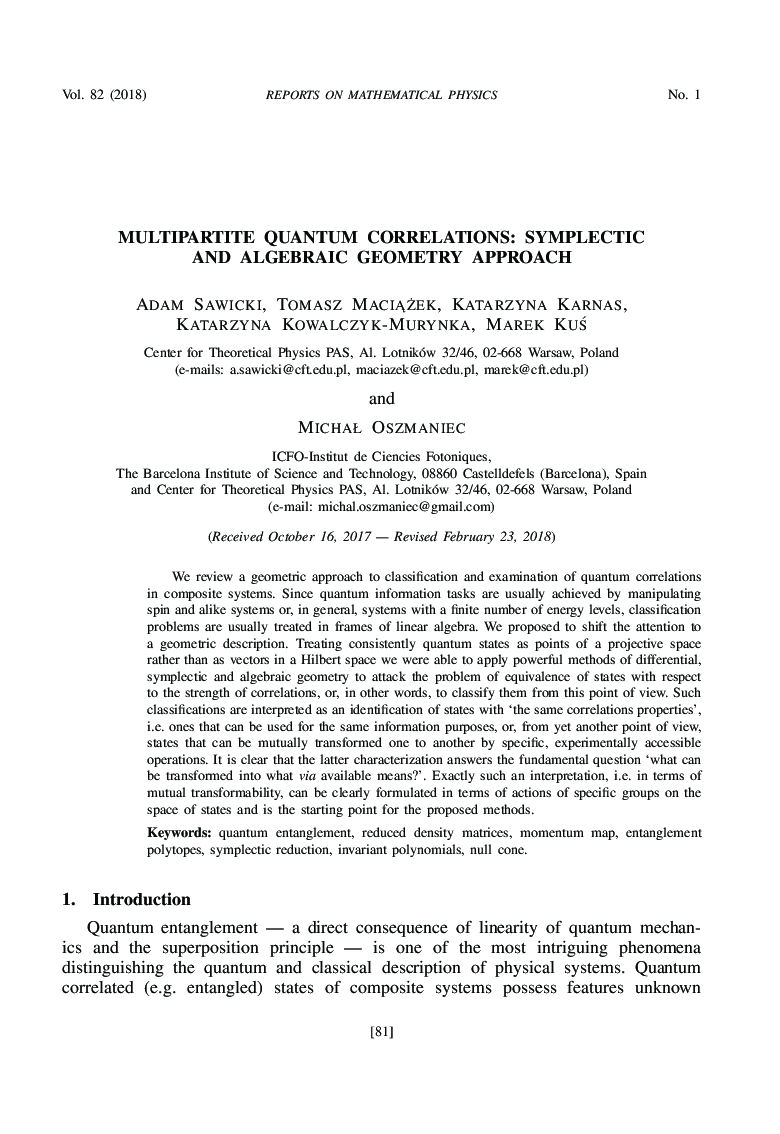| Article ID | Journal | Published Year | Pages | File Type |
|---|---|---|---|---|
| 11015566 | Reports on Mathematical Physics | 2018 | 31 Pages |
Abstract
We review a geometric approach to classification and examination of quantum correlations in composite systems. Since quantum information tasks are usually achieved by manipulating spin and alike systems or, in general, systems with a finite number of energy levels, classification problems are usually treated in frames of linear algebra. We proposed to shift the attention to a geometric description. Treating consistently quantum states as points of a projective space rather than as vectors in a Hilbert space we were able to apply powerful methods of differential, symplectic and algebraic geometry to attack the problem of equivalence of states with respect to the strength of correlations, or, in other words, to classify them from this point of view. Such classifications are interpreted as an identification of states with 'the same correlations properties', i.e. ones that can be used for the same information purposes, or, from yet another point of view, states that can be mutually transformed one to another by specific, experimentally accessible operations. It is clear that the latter characterization answers the fundamental question 'what can be transformed into what via available means?'. Exactly such an interpretation, i.e. in terms of mutual transformability, can be clearly formulated in terms of actions of specific groups on the space of states and is the starting point for the proposed methods.
Keywords
Related Topics
Physical Sciences and Engineering
Mathematics
Mathematical Physics
Authors
Adam Sawicki, Tomasz Maciażek, Katarzyna Karnas, Katarzyna Kowalczyk-Murynka, Marek KuÅ, MichaÅ Oszmaniec,
